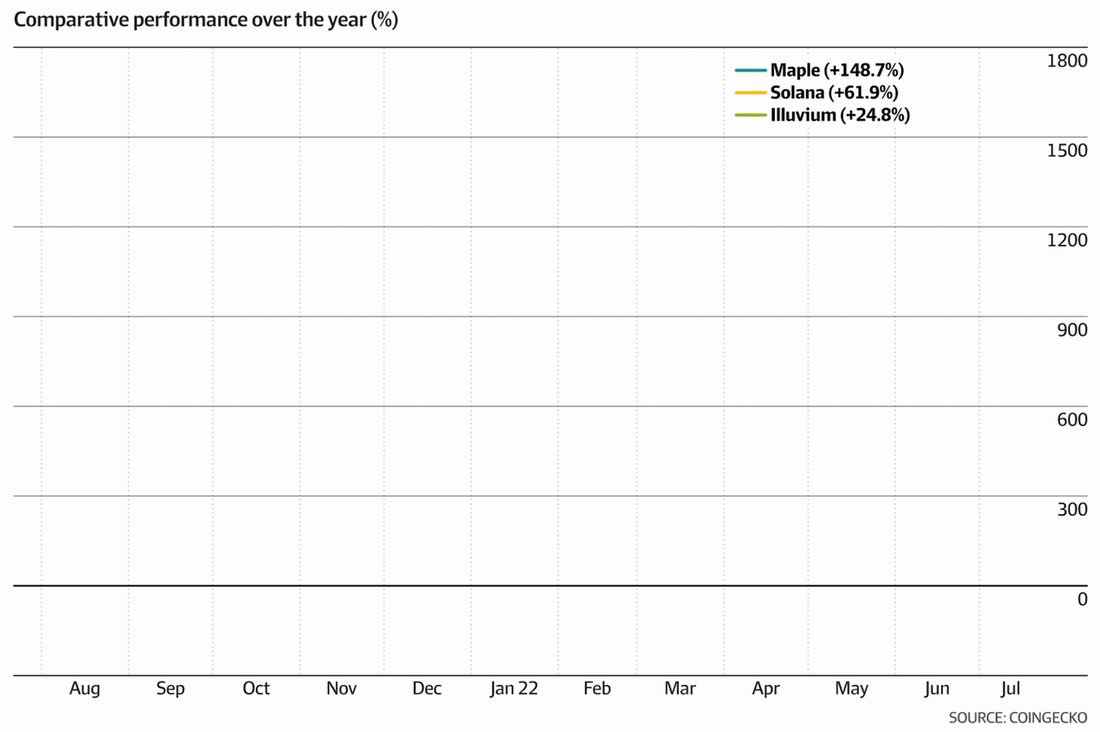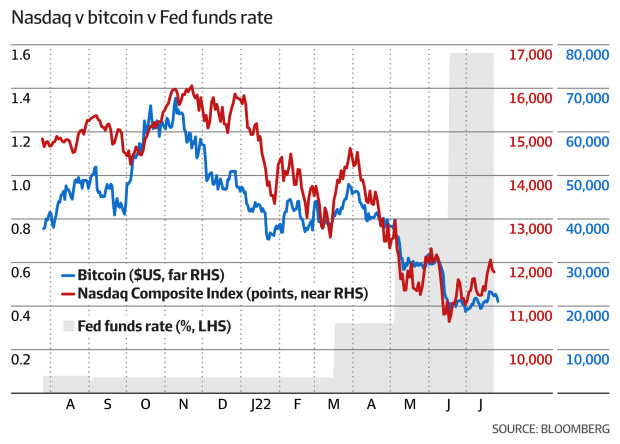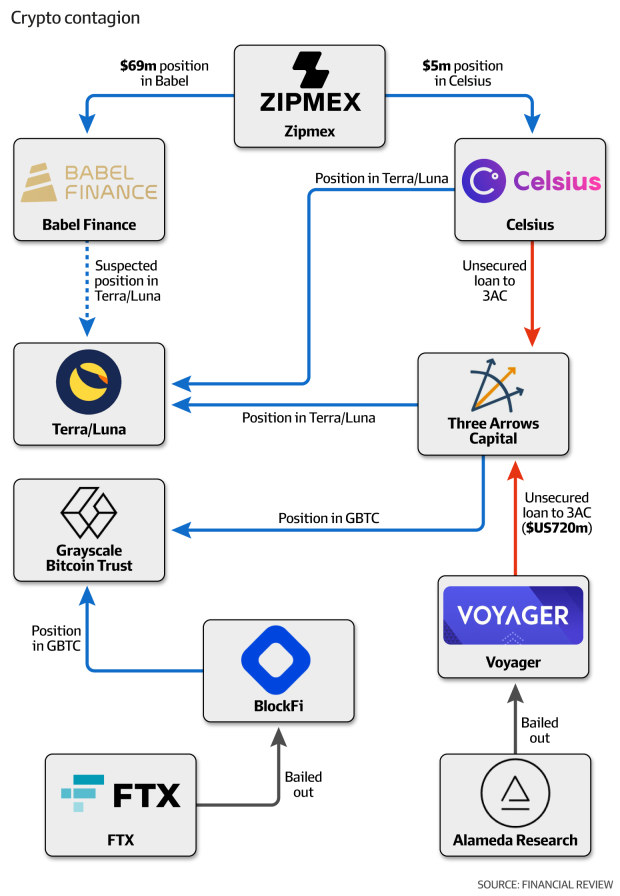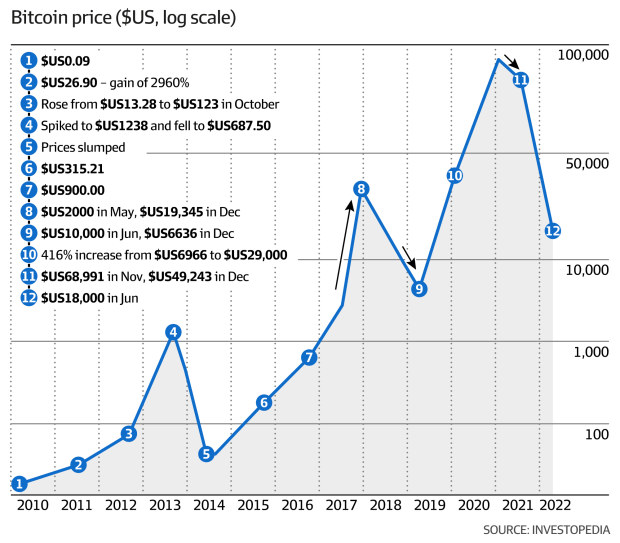What Made Crypto Crash in 2022? Will it survive?
Some systems connect lenders with borrowers, and depending on how much demand there is on each side, you calculate an “interest rate” for investors who tip in money.
These are called “automated lending protocols”, and the largest are Aave, Maker and Compound, which have fallen by 65 per cent, 59 per cent and 72 per cent respectively.
DeFi also boasts “automated market makers” or decentralized exchanges, which automatically connect buyers and sellers and also provide liquidity to marketplaces.
The largest are Uniswap, Curve and PancakeSwap, which are down 60 per cent, 78 per cent and 67 per cent respectively since 1 January. Australian DeFi projects include Synthetix, which is down 38 percent, Maple Finance, which is down 14 percent.

Although the token prices are the most obvious way to track the performance of a DeFi project, the returns show how much demand there is for the system.
For example, if many people want to lend their money, the rate of return is high. When people don’t want to lend it, returns are low. The yield in January was between 10 and 20 percent, while the yield is between 0.5 percent and 5 percent now, which shows how much money has pulled out of the crypto markets.
NFTs, or non-fungible tokens, have been hit the hardest in this latest crypto sale. NFTs are any digital asset attached to a token and have seen an explosion of popularity in the digital art market.
The popularity of digital artworks attached to NFT technology made many people who had never previously been interested in crypto markets pour in their money.
Australian businesses exposed to the NFT market are NFT marketplace builder ImmutableX, which is down 73 percent, and video game Illuvium, which is down 86 percent since the start of the year.
The only types of digital assets that have seen inflows are stablecoins. These are cryptocurrencies that trade in line with another asset such as the US dollar or Australian dollar.
Although the market value of Bitcoin has fallen 70 percent this year, the market value of all stablecoins has only decreased by 11 percent. Most analysts say this is an indication that money has flowed out of many digital assets, but that it has not completely left the ecosystem.
What is the reason for the sale (and is it just crypto)?
There are two main reasons why cryptocurrencies of all stripes have sold off.
The first is a macroeconomic one. For a long time, low interest rates meant that bonds and other “safe” investments yielded very little, so investors were pushed out into stocks and sometimes crypto to try and find returns.
Digital assets are notoriously volatile and subject to market sentiment and momentum, rather than fundamental analysis, so there were many excited traders trying to cash in on the moves.

Combined with the rise of lucrative DeFi returns, and a rush of speculation on NFTs, and crypto markets soared in recent years.
But rising interest rates around the world mean investors want to avoid holding risky assets right now.
Since the US Federal Reserve began raising interest rates in March – the first time in three years – and signaling many more hikes were to come, investors have pulled their money out of riskier markets. The US central bank acted again on 27 July, raising interest rates by a further 0.75 percentage points.
This “risk-off attitude” is visible in the arbitrary crisis in high-growth technology stocks that have fallen as much as 70 percent.
What is causing so many crypto ‘banks’ to collapse?
The other reason cryptocurrencies are selling off is the widespread collapse of several major crypto “banks” and hedge funds. Most notable are Three Arrows Capital and crypto lender Celsius, both of which have filed for bankruptcy.
Just like in the global financial crisis, these collapses come down to massive amounts of leverage and borrowing in this latest crypto cycle.

In May, an algorithmic stablecoin called Terra/Luna collapsed. It was meant to remain firmly pegged to the US dollar through a trading mechanism. But the team behind the coin paid traders 18 percent interest to keep the coin stable.
Terra/Luna was very widespread as a stablecoin, and when it suddenly dropped to $0, many businesses were in trouble.
One was Singapore-based Three Arrows Capital. Not only was it heavily exposed to Terra/Luna, but it had also taken out loans that it was unable to repay when the crypto collapse occurred.
Another collapsed crypto business was Celsius, which offered customers a return of over 18 percent for depositing digital assets. Celsius had taken these deposits and traded them in high-risk markets behind the scenes to earn the interest to repay customers.
One investment was actually in Three Arrows Capital; an illustration of the market contagion that makes crypto investors nervous. How many major players are exposed to each other?
It turns out a lot. Greyscale Trust, BlockFi, Voyager are just some of the names that got big holes in their balance sheet when Three Arrows collapsed.
Another crypto bank, Babel Finance, is also struggling to stay solvent. It turned out that Babel was also taking depositors’ money and trading it without any risk control behind the scenes.
Australian-founded cryptocurrency exchange Zipmex has been caught up in the turmoil, announcing last month that it was seeking to recoup $69 million it had lent to the rocky “bank”.
It is worth noting that these businesses are all centralized organizations. They are run by teams of people who made decisions about how much they wanted to borrow against their deposits.
Unlike traditional exchanges, which have automated “circuit breakers” that stop trading if the market begins to sell off drastically, crypto businesses could not stop the flow of money out the door in time.
They also borrowed more and more crypto to turbocharge their returns. They took big risks and it blew up.
The contagion within crypto markets has not spilled over into other markets, but looking under the hood reveals how interconnected many of these crypto projects are.
How does this compare to previous crashes?
This is not the first crypto crash. In fact, in bitcoin’s 10-year history, there have been several drops of 70 percent, in addition to an eye-popping 90 percent drop.
Ethereum, which emerged in 2015 with its cryptographic smart contract blockchain, has also had at least two 70 percent collapses.
During these crashes, it was pretty clear what had caused the sales. It was either a hack, an exchange being shut down, regulators banning crypto use or the macro picture causing investors of all stripes to withdraw their investments.

This time, however, there are more complex reasons why cryptocurrencies – and there are 19,000 of them – are being sold.
But sophisticated crypto investors don’t seem particularly worried about the pullback.
If you’ve done your homework on the types of projects being developed and researched the unit economics on the chain, many investors see a buying opportunity. Just like technology investors in the stock market.
Can crypto bounce back from this?
Like many venture capital-backed or speculative businesses, crypto startups have laid off waves of workers to save money.
But at the heart of much of the crypto industry’s “washing out” is an internal debate, or re-examination, of decentralized businesses versus centralized ones.
For market observers, the crypto organizations built on the chain using decentralized systems have withstood the widespread carnage.
They say the blockchain-based technology that connects buyers and sellers, or lenders and borrowers, may experience less activity than usual, and their automated return calculations may be lower, but the technology itself hasn’t broken.
In fact, many investors are happy that the selloff has swept some of the overhyped, crazy, and unsophisticated speculation-obsessed investors out of the market.


